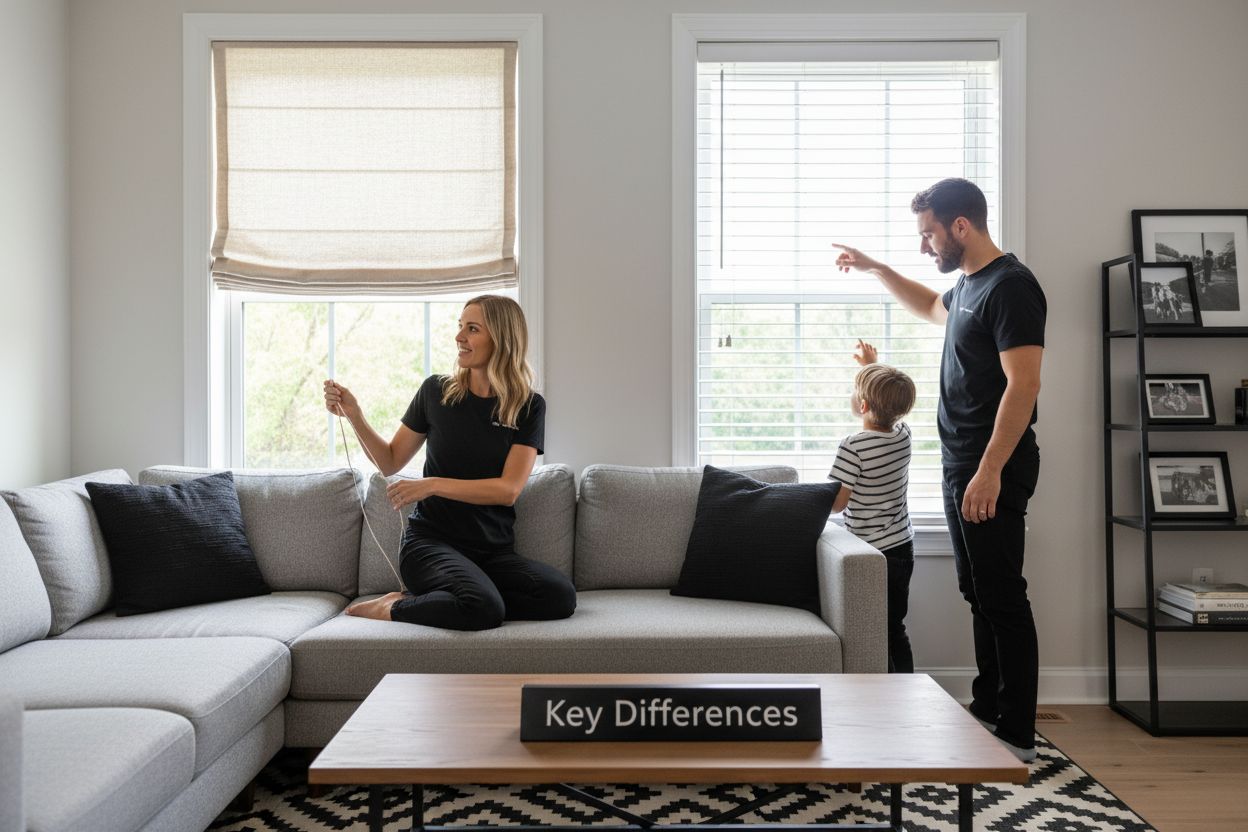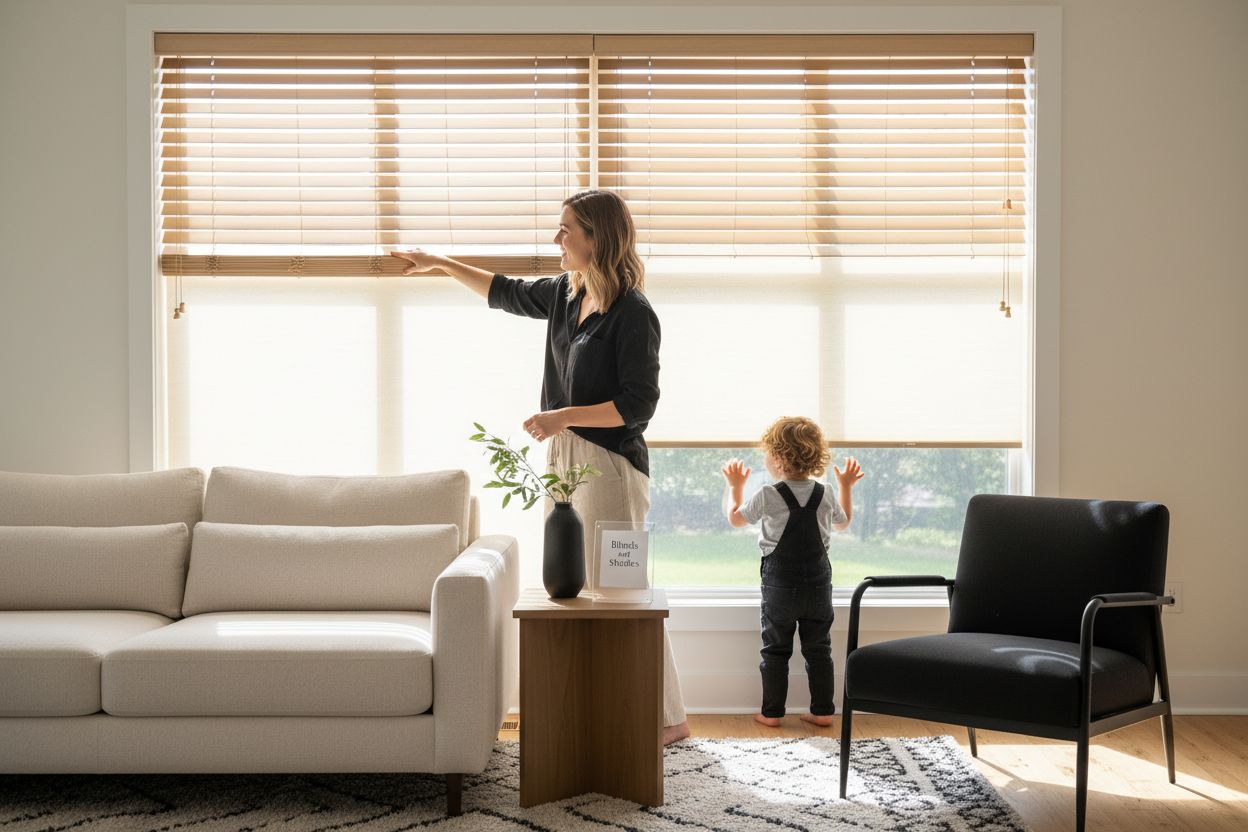
Understanding the Differences Between Blinds and Shades
Just changing your window coverings can totally shift the mood of a room. Most people focus on colors or patterns, but the real difference comes from how blinds and shades work. Blinds give you pin-point control with adjustable slats, while shades use a solid sheet of fabric for complete privacy and a softer look. Surprising as it sounds, picking the right type has a bigger impact on your comfort and energy bills than you might think.
Table of Contents
- What Are Blinds And Shades?
- Key Functionality Differences: Blinds Vs Shades
- Materials And Design Choices: Blinds And Shades Explained
- Practical Considerations For Blinds And Shades In Your Home
Quick Summary
| Takeaway | Explanation |
|---|---|
| Blinds offer adjustable light control | Blinds feature slats that can be tilted for precise light filtering and management in varying degrees. |
| Shades provide a uniform aesthetic | Shades, made from continuous fabric, offer a soft and cohesive appearance, diffusing light smoothly when raised or lowered. |
| Maintenance varies by type | Blinds are easy to clean with simple dusting, whereas fabric shades may require professional cleaning methods for maintenance. |
| Consider installation costs and complexity | Blinds generally are easier and cheaper to install compared to shades, which may need custom sizing and professional installation. |
| Material choices affect functionality | Different materials for blinds and shades influence durability, aesthetics, and performance, impacting overall effectiveness in light and privacy management. |
What are Blinds and Shades?
Window treatments are essential design elements that transform interior spaces by controlling light, providing privacy, and enhancing aesthetic appeal. Blinds and shades represent two fundamental categories of window coverings with distinctive characteristics and functional approaches.
Defining Window Blinds
Blinds are structured window coverings composed of horizontal or vertical slats that can be adjusted to regulate light and visibility. Research from the Department of Energy indicates these window treatments typically feature materials like wood, aluminum, plastic, or composite that can be tilted and rotated to create varying levels of light penetration.
Key characteristics of blinds include:
- Adjustable individual slats that can be angled
- Precise light control through rotation mechanisms
- Available in horizontal and vertical configurations
- Often operated by cord, wand, or motorized systems
Understanding Window Shades
In contrast to blinds, shades are soft window coverings made from continuous fabric or material that move up and down as a single unit. Unlike slat-based blinds, shades provide a more uniform appearance and softer aesthetic. They come in various styles such as roller, Roman, cellular, and pleated designs.
Windowshade characteristics include:
- Constructed from fabric or soft materials
- Raised and lowered as a complete unit
- Offer different opacity levels from sheer to blackout
- Provide smoother visual appearance compared to blinds
For more detailed insights, read our comprehensive guide on blinds vs. shades to help you make an informed decision about your window treatment selection.
Key Functionality Differences: Blinds vs Shades
While both blinds and shades serve the primary purpose of controlling light and providing privacy, they function through distinctly different mechanical principles that impact their performance and aesthetic qualities. Understanding these functionality differences helps homeowners make more informed window treatment selections.
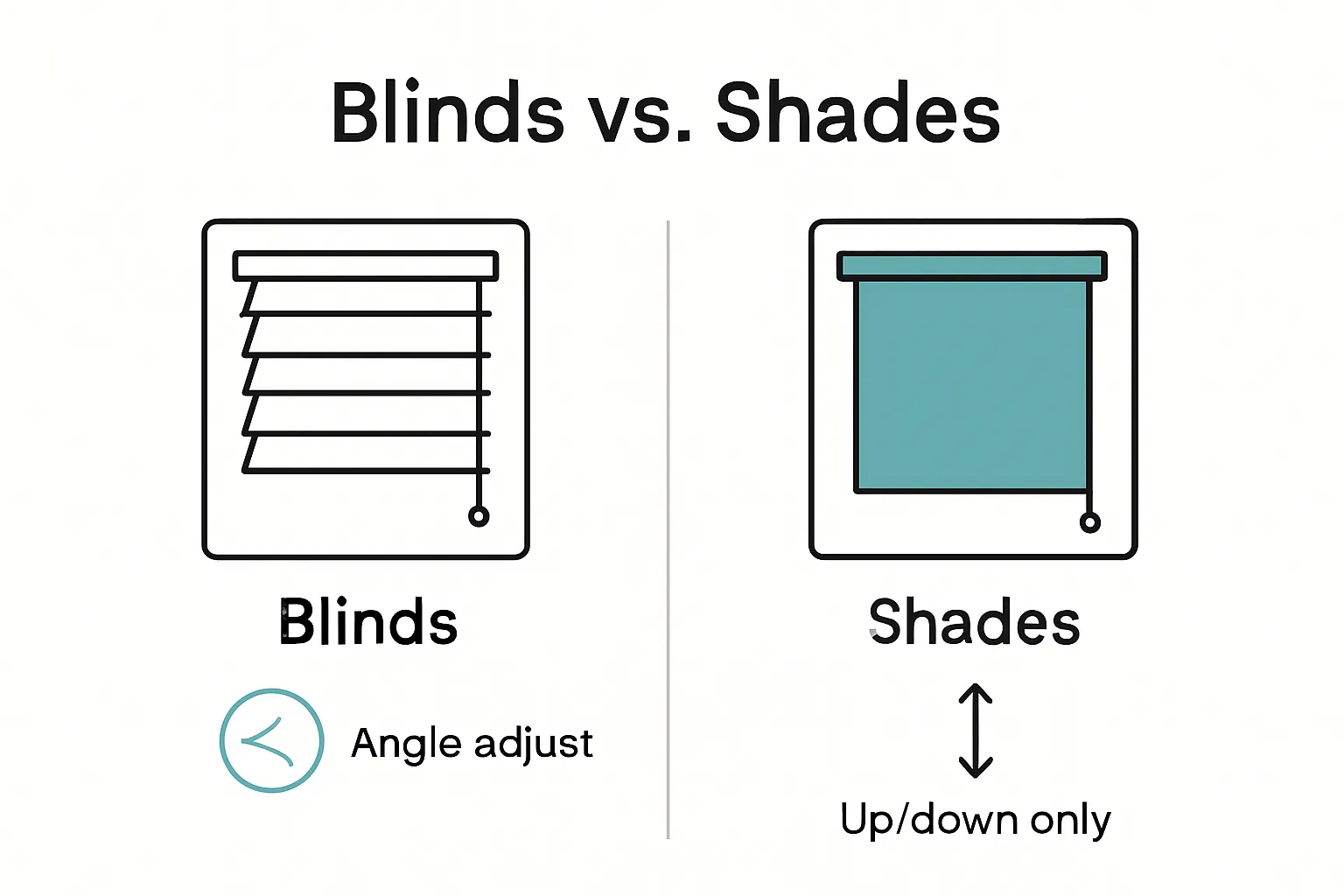
Light Control Mechanisms
Research from the Department of Energy highlights that blinds and shades offer unique approaches to light regulation. Blinds provide granular light control through their adjustable slats, allowing precise angle modifications that can filter or block sunlight incrementally. Homeowners can tilt slats to create specific lighting environments ranging from completely dark to softly diffused.
Key light control differences include:
- Blinds allow minute angle adjustments of individual slats
- Shades offer binary light control through complete raising or lowering
- Horizontal blinds provide more nuanced light filtering compared to shades
- Cellular shades can offer superior insulation while managing light transmission
Privacy and Visibility Variations
The structural design of blinds and shades dramatically influences privacy management. Blinds with adjustable horizontal or vertical slats enable users to maintain partial visibility while blocking direct sight lines. Shades, conversely, function as a more uniform barrier that either completely obscures or fully reveals the window space.
Privacy characteristics vary significantly:
- Blinds permit partial visibility through slat adjustments
- Shades provide complete visual obstruction when lowered
- Material opacity in shades determines transparency levels
- Blinds allow more flexible privacy configurations
Learn more about choosing the right window treatment for your specific home requirements. Each window covering offers unique advantages that can transform your interior environment.
Below is a comparison table highlighting the main functional and visual differences between blinds and shades to help clarify their unique features and performance.
| Feature | Blinds | Shades |
|---|---|---|
| Structure | Individual horizontal or vertical slats | Single, continuous piece of fabric |
| Light Control | Adjustable slats for precise light filtering | Raise or lower for overall light management |
| Privacy | Partial or complete via slat positioning | Full privacy when lowered |
| Material Options | Wood, aluminum, faux wood, composites | Natural and synthetic fabrics, blackout layers |
| Maintenance | Easy dusting and wiping | May require delicate or professional cleaning |
| Appearance | Structured look with visible lines | Soft, uniform appearance |
| Installation | Typically straightforward and DIY-friendly | May need custom sizing and professional setup |
Materials and Design Choices: Blinds and Shades Explained
The selection of window treatments involves understanding the nuanced materials, design aesthetics, and functional characteristics that define blinds and shades. Each material and design choice impacts performance, durability, and visual appeal in unique ways.
Blind Material Compositions
Research from the Department of Energy indicates that blind materials significantly influence their functionality and style. Traditional blind materials range from classic wood and aluminum to modern synthetic composites, each offering distinct advantages.
Blind material characteristics include:
- Wood blinds provide natural warmth and traditional aesthetic
- Aluminum blinds offer durability and modern, sleek appearance
- Faux wood materials resist moisture and provide cost effective alternatives
- Composite materials combine performance and aesthetic flexibility
Shade Fabric and Design Variations
Shades represent a more textile driven window treatment category, featuring an extensive array of fabric types, textures, and design configurations. Unlike rigid blinds, shades offer softer visual and tactile experiences through carefully selected materials.
shade design characteristics include:
- Natural fabrics like cotton and linen create organic, breathable environments
- Synthetic materials provide enhanced light blocking and durability
- Textured fabrics add visual depth and architectural interest
- Specialized materials like thermal and blackout fabrics offer advanced functionality
Explore our comprehensive guide to window shade varieties to understand the intricate world of window treatment design and material selection. Each material tells a unique story about style, performance, and home aesthetic.
This table summarizes the most common materials used for blinds and shades and their specific characteristics relevant to function and style.
| Window Treatment | Common Materials | Key Characteristics |
|---|---|---|
| Blinds | Wood | Warm, traditional look; durable |
| Blinds | Aluminum | Modern, sleek appearance; moisture-resistant |
| Blinds | Faux Wood | Cost-effective; resists moisture |
| Blinds | Composite | Blends styles; durability and flexibility |
| Shades | Natural Fabrics | Organic feel; breathable; can allow light diffusion |
| Shades | Synthetic Fabrics | Enhanced light blocking; resists fading and wear |
| Shades | Specialized Fabrics | Thermal/blackout for extra insulation or full light blockage |
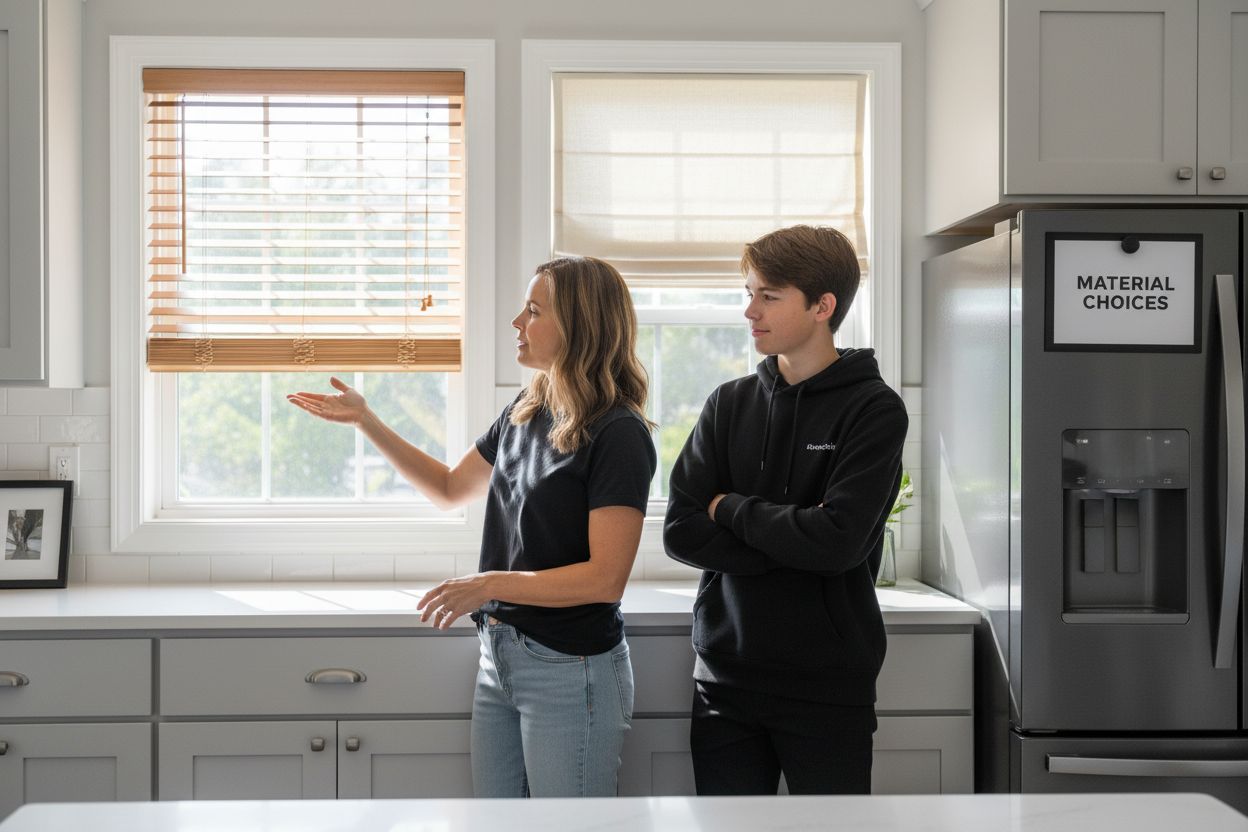
Practical Considerations for Blinds and Shades in Your Home
Choosing the right window treatment involves more than aesthetic preferences. Homeowners must consider practical factors like maintenance, cost, installation complexity, and long term performance to make informed decisions that balance style and functionality.
Maintenance and Cleaning Requirements
Research from the Department of Energy highlights that different window treatments demand unique care strategies. Blinds typically offer easier maintenance with smooth surfaces that can be quickly dusted or wiped clean, while fabric shades require more delicate and specialized cleaning approaches.
Maintenance considerations include:
- Blinds with smooth surfaces allow quick dust removal
- Fabric shades may require professional cleaning
- Metal and wood blinds resist moisture and staining
- Cellular shades need gentle vacuum or specialized cleaning techniques
Cost and Installation Factors
Window treatment investments extend beyond initial purchase prices. Installation complexity, potential customization needs, and long term durability significantly impact overall value. Blinds often provide more straightforward installation processes, whereas shades might require more precise measurements and potentially professional mounting.
Financial and installation aspects to evaluate:
- Blinds generally have lower initial and installation costs
- Custom shade sizing increases overall expense
- Motorized options add complexity and price for both treatments
- Material quality directly influences long term performance
Explore our expert recommendations for living room window treatments to help you navigate these practical considerations and make the most informed choice for your home environment.
Ready to Solve Your Window Treatment Dilemma?
Choosing between blinds and shades can feel overwhelming when every room demands something different for light control and privacy. The article above highlights real frustrations many homeowners face, like struggling to balance style, functionality, and easy maintenance. You can stop settling for generic solutions that fail to meet your unique needs.
Discover our Best Sellers for proven favorites that blend performance and design. If you crave something new or want to explore trending options, browse our New Arrivals for the latest updates in blinds and shades.
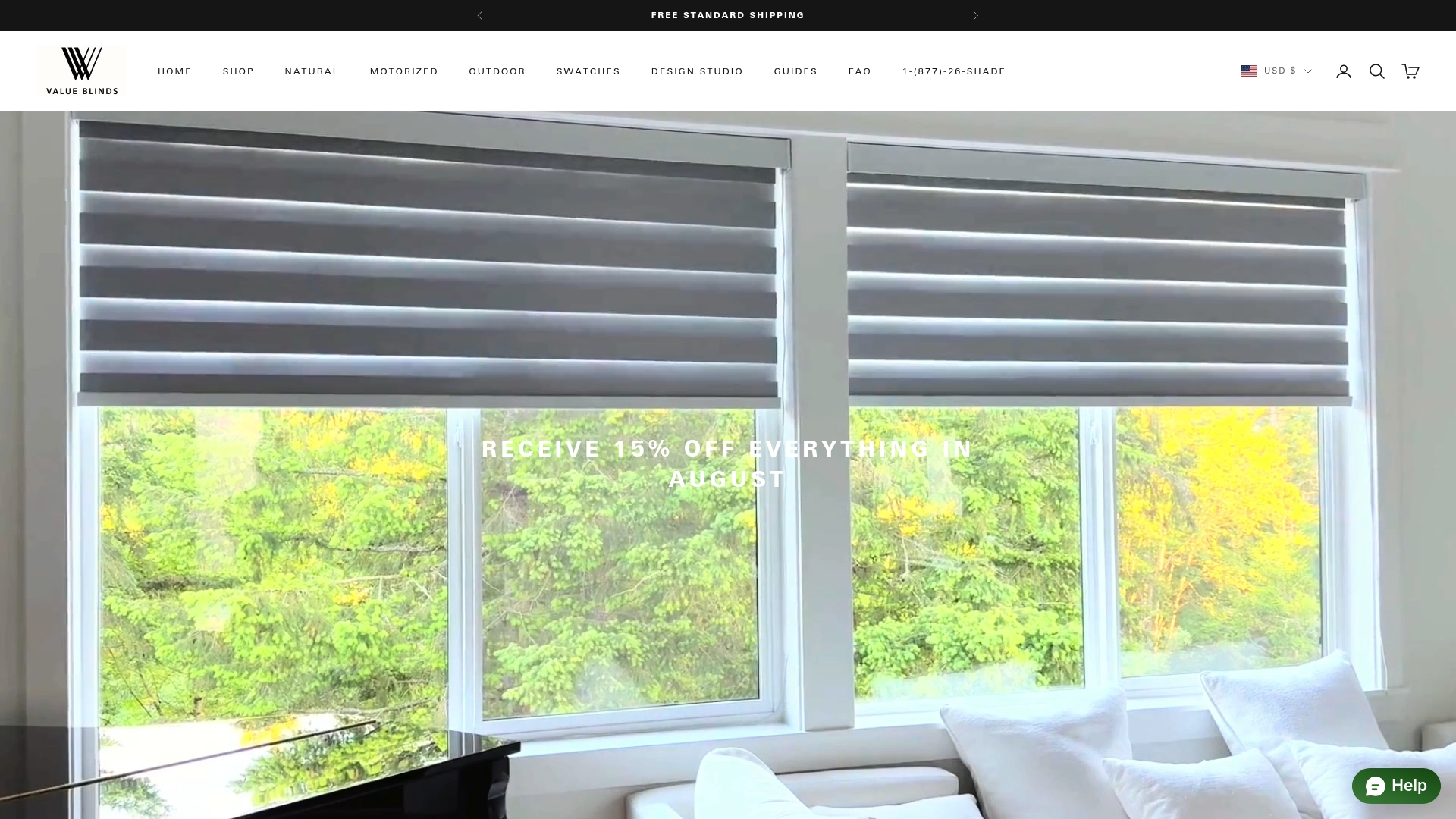
Let Value Blinds help you make that final decision with confidence. Enjoy a seamless shopping experience, free samples, expert support, and custom solutions perfect for any space. Take the next step and start transforming your windows today at Value Blinds Direct.
Frequently Asked Questions
What is the main difference between blinds and shades?
Blinds are made of adjustable slats that allow precise control of light and visibility, while shades are soft window coverings that move as a single unit without slats, providing a more uniform appearance.
How do blinds and shades differ in terms of light control?
Blinds provide granular light control through tiltable slats, allowing for precise adjustments. In contrast, shades offer binary light control by either completely raising or lowering to block or allow light.
Which window treatment option offers better privacy?
Blinds allow for flexible privacy configurations with partial visibility through slat adjustments, whereas shades provide a more uniform barrier that completely obscures the window when lowered.
What materials are commonly used for blinds and shades?
Blinds are typically made from materials like wood, aluminum, and composites, while shades are constructed from various fabrics, ranging from natural to synthetic materials, each offering unique visual and functional characteristics.



